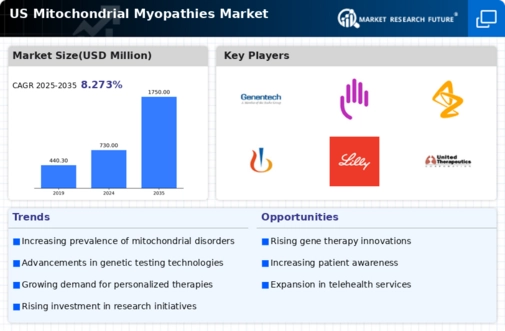The US Mitochondrial Myopathies Market is characterized by a range of competitive dynamics that influence factors such as innovation, product development, and market strategy. As an emerging segment within the broader neuromuscular disorder market, it includes various therapeutic approaches aimed at addressing the unique challenges presented by mitochondrial myopathies.
The competitive landscape is marked by collaborations between biotechnology firms, research institutions, and healthcare providers. These partnerships are essential for driving advancements in treatments and are often a response to the increasing prevalence of mitochondrial diseases in the population.
With the need for specialized therapies, companies in this market strive to differentiate themselves through research and development, regulatory approvals, and strategic positioning.
Genentech plays a significant role in the US Mitochondrial Myopathies Market, leveraging its extensive research background and strong market presence. The company is known for its commitment to innovation in biopharmaceuticals, with a focus on providing targeted therapies for various genetic conditions.
Genentech's strengths lie in its robust pipeline and the application of cutting-edge biotechnological advancements, which have positioned it well within this niche market. Its strong relationships with healthcare providers and patient advocacy groups further enhance its reputation and enable effective outreach to the community affected by mitochondrial disorders.
The company's ongoing research initiatives and dedication to understanding mitochondrial myopathies demonstrate its pivotal role in shaping treatment landscapes within the United States.
Bristol Myers Squibb has established a notable presence in the US Mitochondrial Myopathies Market through its comprehensive portfolio of products and therapeutic strategies. The company focuses on delivering innovative solutions, backed by a solid commitment to research and development.
With flagship products tailored to address mitochondrial dysfunction, Bristol Myers Squibb capitalizes on its capability to leverage scientific expertise and advanced drug delivery systems. Its market presence is significantly augmented by strategic mergers and acquisitions that expand its research capacities and therapeutic reach.
By continuously investing in clinical trials and partnerships aimed at pioneering treatments tailored for mitochondrial conditions, Bristol Myers Squibb affirms its position as a leader in the field, dedicated to enhancing treatment outcomes for patients across the United States.






















